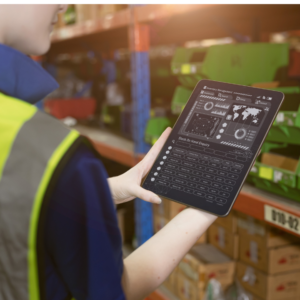
What Are Tariffs?
Tariffs are taxes imposed by a government on goods imported from other countries. They protect domestic industries, generate revenue, and sometimes serve as a tool in trade negotiations. In the U.S., the federal government sets these tariffs, which vary depending on the product and the country of origin.
When tariffs are applied, importers must pay an extra charge for their goods. This cost is often passed along the supply chain from logistics providers to businesses and consumers.
Tariff Impacts on Americans
Price Increases on Consumer Goods
One of the most immediate tariff impacts on Americans is the rise in consumer prices. Retailers may increase prices to offset higher costs when tariffs are added to electronics, furniture, or auto parts.
Strain on Small Businesses
Many U.S.-based small and medium-sized enterprises (SMEs) rely on affordable imports. Tariffs can squeeze their margins, competing with larger corporations that can absorb or bypass these costs harder.
Increased Freight Costs
Higher tariffs often come with logistics service complications. Importers look for ways to reduce costs elsewhere, like negotiating cheaper freight shipping to the USA, switching suppliers, or minimizing cargo volume (e.g., using less-than-container-load
Tariff Impacts to Canada
Even though the U.S. sets tariffs, their effects stretch into Canada:
Cross-Border Trade
Canada is one of America’s largest trading partners. Any tariffs applied by the U.S. on goods coming from or going to Canada can significantly alter cross-border supply chain dynamics. Tariff impacts to Canada may include reduced exports, decreased business competitiveness, and retaliatory tariffs.
Freight Flow Disruptions
Canadian logistics providers often face unpredictability due to sudden tariff changes. This affects the two countries’ scheduling, delivery times, and freight quotes.
Tariff and Freight: What’s the Difference?
People often confuse tariffs with freight. Here’s the simple breakdown:
- Tariff: A government-imposed tax on imports or exports.
- Freight: The cost of physically transporting goods via air freight, ocean freight, or ground logistics.
While tariffs are regulatory and political, freight costs depend on supply chain logistics, carrier availability, and service providers like digital freight forwarders.
How Tariffs Affect Freight Shipping
Unpredictable Costs
Tariffs can make it hard to predict final landed costs. When quoting air freight instant rates or requesting an ocean freight shipping quote, those figures often exclude duties and taxes, which could vary depending on policy changes.
Demand for Digital Tools
Businesses now seek real-time, transparent tools to manage shipping. Platforms like ExFreight offer air freight online rates, detailed tracking, and instant booking features that help users plan even with tariff uncertainty.
Shift in Shipping Methods
Shippers might switch from full container loads to LCL cargo rates (less-than-container load) to minimize costs. This shift also affects air freight from Germany, China, and other major exporters to North America.
How Digital Freight Forwarding Helps
With the volatility caused by tariffs, digital freight forwarding offers solutions:
- Real-time freight quotes with cost breakdowns.
- Transparent international air freight services pricing.
- Instant comparison of freight companies in the USA.
- Efficient route options that adapt to changing duties or delays.
At ExFreight, we use technology to simplify international shipping for small to medium businesses. Whether importing from Asia or managing freight shipping to Spain, our tools help you adjust to real-time costs and regulatory updates.
FAQs: Tariffs and ExFreight Shipping
What’s included in ExFreight’s international freight service?
Our international freight shipping services include door-to-door or door-to-port options, customs filing, carrier selection, and document management. Duties and taxes are separated and calculated via our global duty estimator tool.
How do I open an account?
It’s easy! Just go to www.exfreight.com and click “Open an Account.” You’ll receive access to freight quote tools, booking features, and shipment tracking.
How do you book a shipment?
Log into your account, input your shipment details, select a mode (air, ocean, or ground), and book. Our platform lets you track the entire process in real-time.

Depending on the service type:
- Door-to-door: Delivery goes directly to your address.
- Door-to-port: You’ll handle customs clearance and final delivery. All necessary documents and alerts are available on your ExFreight dashboard.
Can I use ExFreight for Amazon FBA shipments?
Yes! We provide services for Amazon FBA logistics, including delivery to Amazon warehouses. Options include lift-gate, inside delivery, and pre-scheduled drop-offs.
Understanding U.S. tariffs is crucial for anyone shipping internationally. These trade taxes directly influence freight rates, consumer pricing, and supply chain operations in the U.S., Canada, and beyond. By leveraging a digital freight forwarding platform like ExFreight, businesses can reduce uncertainty, gain access to instant quotes, and adapt quickly to policy changes.
So, whether you’re sourcing components from Asia or delivering goods across North America, stay ahead by combining tariff knowledge with tech-driven logistics. Ready to take control of your shipping?
Open an account with ExFreight today.





Leave A Comment
You must be logged in to post a comment.